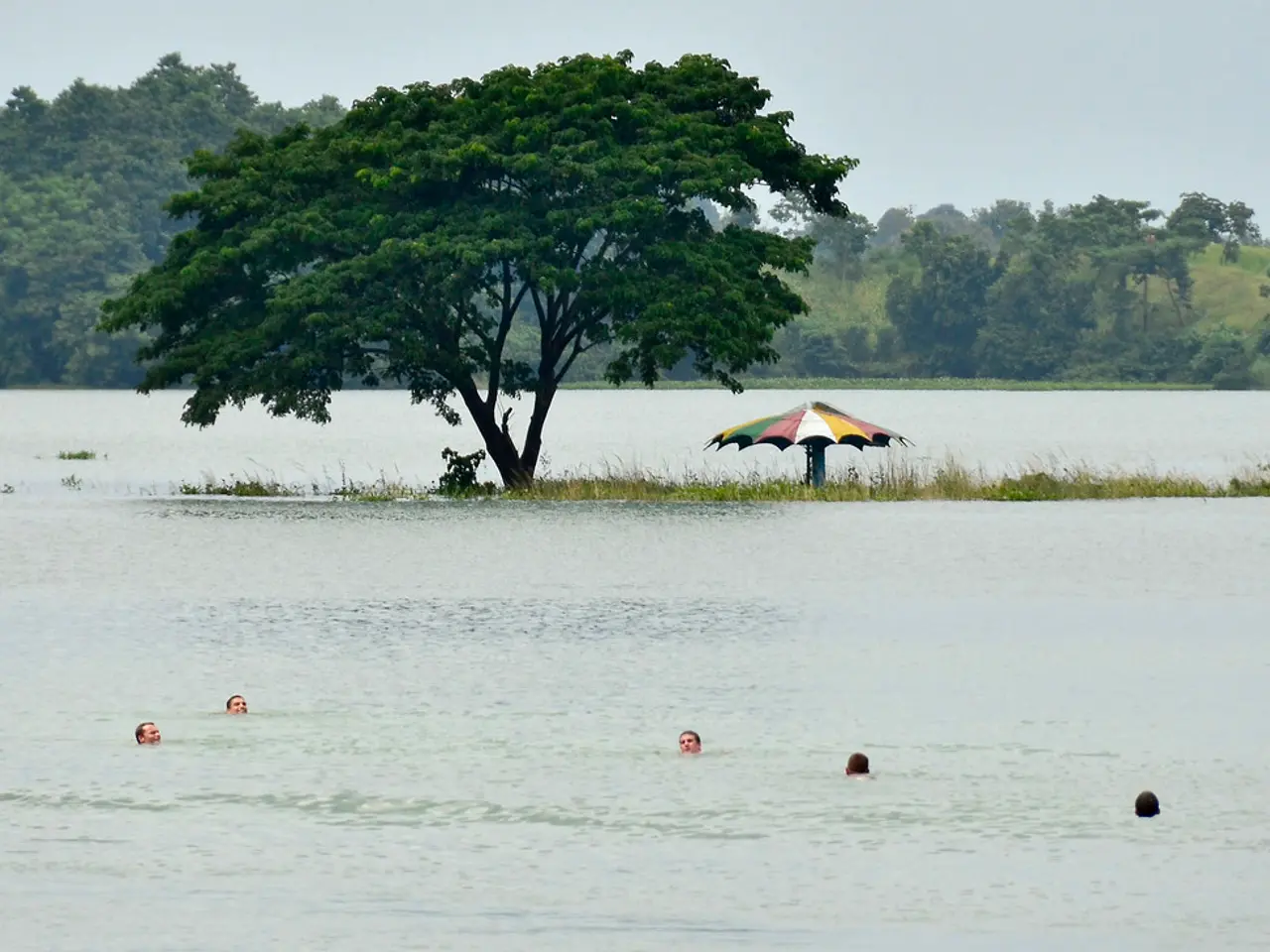Across Eastern Canada, summer's early dry spell triggers region-wide drought situation
In the heart of summer 2025, several cities in Eastern Canada, including Toronto, Halifax, and St. John's, are grappling with a severe drought. Many of these cities have experienced 50 per cent or less of normal rainfall since the start of meteorological summer on June 1st.
Halifax and surrounding Nova Scotia have seen rainfall drop to roughly 60% of normal from April to July, prompting moderate to severe drought designations and major water supply concerns. In St. John’s, Newfoundland and Labrador, rainfall is about one-third below normal, exacerbating drought stress and leading to visible impacts like dry wells and wildfire risk nearby. Toronto and much of southern Ontario are also experiencing drought stress, reflected in agricultural advisories limiting irrigation where possible.
The drought has led to municipal water restrictions focusing on non-essential outdoor use reduction in cities including Toronto, Halifax, and St. John's. Residents are urged to minimize outdoor water usage and fix leaks promptly to preserve limited supplies amid rapidly declining rainfall levels. Halifax Water has asked residents to voluntarily conserve water due to low supply levels amid a drought in Nova Scotia.
Agriculture is being significantly impacted across these areas. Farmers report severe water shortages restricting crop irrigation and diminishing yields, especially for water-intensive crops like berries and vegetables in Nova Scotia. Extended dry spells and heat stress reduce crop fertilization potential, with heat-sensitive stages of pollen development in some crops further threatening productivity. The drought, combined with drying of surface water and groundwater, is causing concern about feed availability for livestock and has led some producers to reduce herd sizes in affected areas.
The drought also increases wildfire risk, impacting both urban and rural sectors. Soaking rains due to only one line of thunderstorms can help to replenish some of the rain deficit, however, the risk with that is potential flooding if one area experiences too much rain at once especially if the ground is already dry.
These conditions highlight the urgent need for coordinated water management and conservation efforts in Eastern Canada through the remainder of the drought period. It's important to remember that during a drought, a single line of thunderstorms can potentially cause flooding if the ground is already dry.
Elsewhere in Canada, Northwestern Ontario, excluding the Thunder Bay area, also recorded less than 85 per cent of normal precipitation in June. Contrastingly, Northern Quebec received 40 to 150 per cent of normal precipitation in June. Despite these regional variations, precipitation was below normal for much of southeastern Ontario and much of Atlantic Canada in June.
This summer's drought is a stark reminder of the challenges posed by climate change. A warming climate can lead to both hot, dry weather as well as flooding events. However, we don't yet have the scientific ability to connect this recent dry weather event directly to climate change.
In other news, NASA astronaut Butch Wilmore has retired 4 months after his extended stay in space. The southern regions of New Brunswick and much of Nova Scotia received less than 85 per cent of normal precipitation in June. Meanwhile, Canada's longest trial ends in a precedent-setting B.C. land claim ruling for 4 First Nations.
As the drought conditions persist, it's crucial for everyone to follow water conservation guidelines and practice efficient water use to mitigate shortages. Conserving water, water restrictions, and burn bans for fire mitigation are a few of the guidelines recommended by officials during droughts. Irrigation becomes more important under dry conditions, which can be costly to farmers. Let's all do our part to conserve water and help our communities navigate through this challenging period.
- In light of the severe drought affecting several Eastern Canadian cities, including Halifax, St. John's, and Toronto, it's essential for residents to conserve water by following guidelines for efficient use and addressing leaks promptly.
- The ongoing drought in Eastern Canada, which has resulted in below-normal rainfall since meteorological summer, underscores the importance of environmental science and weather-forecasting in tackling climate-change-induced weather events.
- As the drought continues to impact farming in Nova Scotia and other affected regions, scientists and farmers alike must collaborate to develop effective strategies for weather-resilient agriculture, such as optimizing irrigation and crop choices.








